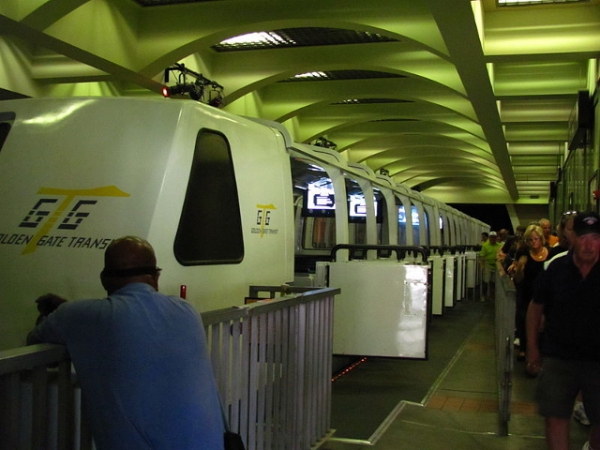
Earthquake was one of Universal Studios Florida's "big three" opening day attractions, along with Kongfrontation and Jaws. Like the others, it opened in technical rehearsals and suffered more than its fair share of breakdowns and glitches during the first few weeks. However, the problems proved more easily fixable, and Earthquake was the first of the big three to settle into reliable operations.
Earthquake was a tremendous reflection of the park’s original concept. The attraction began with behind-the-scenes information about the 1974 Charlton Heston film of the same name, transitioned into an interactive experience that used audience volunteers to demonstrate movie-making techniques, and ended with a thrilling ride through an 8.4-magnatude earthquake. Combining education and thrills, making guests feel like they were alternately on a working backlot and in the middle of their favorite films, was Universal Orlando’s specialty throughout the 1990s, and Earthquake was arguably one of the most successful implementations of that idea.
The attraction gave up many hidden secrets of filmmaking, but there were aspects to the experience itself that guests never knew. I worked at Earthquake toward the end of its run, and here are my 4 favorite secrets about the attraction.
1. Those miniatures were more amazing than you knew
After welcoming guests and choosing volunteers in the pre-show room, your guide led you to a screening room to view a short sequence from the movie, followed by a clip of Charlton Heston explaining how miniatures were used to create the scene. Then the screen lifted up, revealing a portion of the miniature set that you had just seen in the film.
The set was protected by a scrim, a sort of backdrop through which light was directed at the models, and visitors were kept well away—close enough to see but far enough away to avoid accidental damage. After a couple of moments, you were ushered onto the soundstage to continue your experience. From the guest’s point of view, the miniatures were pretty amazing, but it was hard to get a really good look at them.
As a team member, however, I got to examine the miniatures in detail from the other side of the scrim. For a film buff like me, the sheer level of detail, combined with the impossibly tiny size of each model, created a truly breathtaking experience that could never be fully appreciated from the audience’s point of view.
2. Spieling on 5’s was like a master class in teamwork
Earthquake team members were divided into two teams for each shift. One team ran all the “attractions” positions, such as Load and Unload. The other team ran all the “spiel” positions, which included taking guests through the film and soundstage sections.
Depending on how busy the park was on a given day, spieling could take place on 5’s, 10’s, or 15’s. This referred to how often a new group of guests began their experience—every 5 minutes, every 10 minutes, or every 15 minutes.
For the spielers, as well as those loading and unloading the ride, 15’s were a cakewalk. The entire spieling portion before the ride lasted for 15 minutes, so only one group of guests was in the building at any time. This gave everyone on the team plenty of breathing room and usually resulted in a stress-free day.
A 10’s day meant working at a moderately busy pace. Groups overlapped slightly, as the soundstage show began at the same time as the next pre-show, but that left the film screening room between groups, so pacing was still pretty easy.
When the park was very busy, we went on the dreaded 5’s. This meant that as soon as one group cleared a room, the next group was ready to enter that room. This created two challenges. One, the spielers were constantly talking, racing from one group to the next with no downtime in between. More importantly, however, pacing had to be exact.
We had a script for each room, and each script was designed to be 5 minutes long. In reality, however, some people speak more quickly or slowly than others. Sometimes a spieler forgot a line. Sometimes a guest asked several questions. Any of these scenarios, easily accommodated on 10’s or 15’s, could become a nightmare on 5’s.
It was common for something that happened on the soundstage to cause a chain reaction down the line of spielers, forcing us to slow down or speed up our own presentations to try to keep pace. If the ride had a breakdown or slow load issue, a spieler in each room was trying his or her best to keep guests entertained during what was sometimes a lengthy delay.
How did we know when the next room was clear and we could release visitors from our room? A countdown clock was mounted on the wall in each room, behind the guests where the spieler could easily see it. It was our job, especially on 5’s, to keep a close eye on the clock and release our guests when it hit zero—but it would let us know if it was time to start stalling by turning red if the next room was not yet clear.


Add new comment